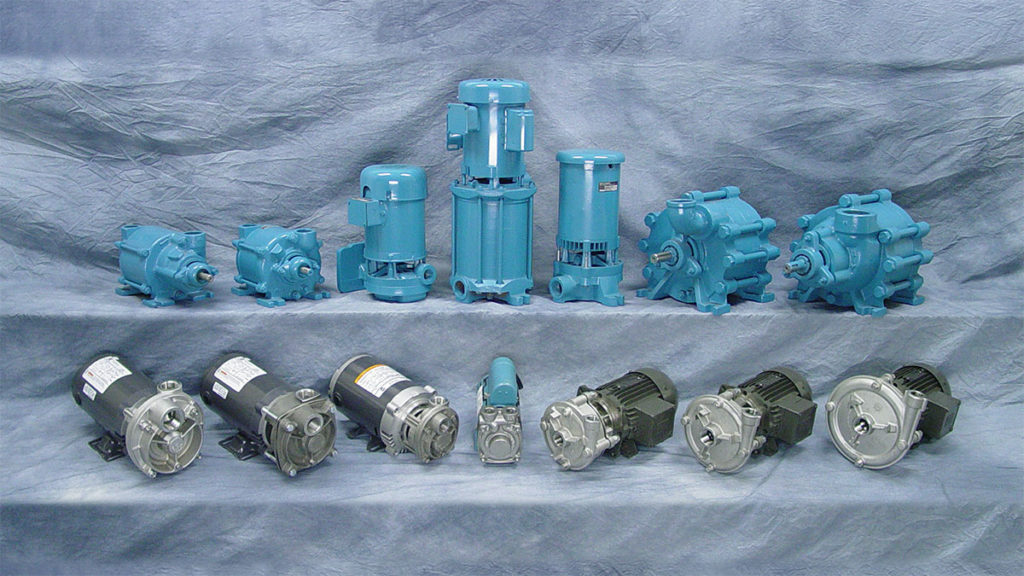Week 3 – The Simple Construction & Low Maintenance of Regenerative Turbine Pumps: Efficiency in Design
In this third part of our series, we explore one of the most attractive features of regenerative turbine pumps: their simple construction and low maintenance requirements. For many industries, reducing downtime, simplifying repairs, and minimizing maintenance costs are top priorities. With regenerative turbine pumps, MTH Pumps offers a solution that checks all these boxes.
Streamlined Design: Fewer Components, Fewer Complications
One of the key reasons regenerative turbine pumps are preferred in demanding industrial applications is their straightforward design. Unlike multi-stage centrifugal pumps, which often require numerous impellers, stage rings, and O-rings to achieve the desired pressure and flow, a close-coupled regenerative turbine pump from MTH can deliver the same performance with far fewer parts.

Let’s break down the components of a typical MTH close-coupled regenerative turbine pump:
- Casing: The outer shell that houses the internal components and directs the fluid through the pump.
- Motor Bracket: The structural element that connects the motor to the pump.
- Impeller: The heart of the pump, which rotates to build up pressure through the regenerative process.
- Motor: The driving force behind the impeller’s rotation.
- Seals and O-rings: Essential for maintaining a leak-proof system.
In contrast, multi-stage centrifugal pumps—commonly used in similar high-pressure applications—have multiple impellers, stage rings, gaskets, and other hardware. This increases the complexity of the pump’s assembly and adds several potential points of failure. The more components a pump has, the greater the likelihood of wear and tear, leading to increased maintenance.
Lower Maintenance, Reduced Downtime
With fewer parts, MTH’s regenerative turbine pumps naturally require less maintenance than their centrifugal counterparts. This simplicity reduces the time and cost associated with repairs, as fewer components need regular inspection, replacement, or adjustment. In an industrial setting, where downtime can lead to costly production delays, this is a significant advantage.
For example, in facilities that rely on multi-stage pumps, operators often face the challenge of inspecting and replacing multiple O-rings, impellers, and gaskets during routine maintenance checks. These systems also require more specialized knowledge and tools for repair. On the other hand, a regenerative turbine pump can be quickly and easily maintained with basic mechanical knowledge, resulting in shorter repair times and less frequent maintenance intervals.
Fewer Parts, Greater Reliability
The simplicity of the regenerative turbine pump’s design also leads to enhanced reliability. Fewer components mean fewer opportunities for things to go wrong. With less mechanical complexity, the chances of leaks, mechanical failures, and wear-related issues are significantly reduced.
In critical applications—such as boiler feed systems, cooling circuits, or chemical dosing—reliability is key. Any unexpected failure could disrupt entire operations, leading to costly repairs and downtime. MTH Pumps’ regenerative turbine designs have proven to be highly reliable in these environments, maintaining high-pressure performance over long periods with minimal intervention.
Applications That Benefit from Simple Construction
The advantages of simple construction and low maintenance are particularly valuable in certain industries where maintenance access is limited, or where continuous, uninterrupted operation is vital. Here are a few key applications that benefit from this design:
- HVAC Systems: In heating and cooling systems, especially in large commercial or industrial buildings, access to equipment can be restricted due to space limitations. A regenerative turbine pump’s simple design allows for easier access to critical parts and quicker repairs in these confined spaces.
- Chemical Processing: Precision and reliability are essential in chemical dosing applications. The fewer the parts, the lower the risk of chemical leaks, ensuring safe and consistent dosing.
- Boiler Feed Systems: In boiler feed systems, reliability is essential to maintaining constant pressure and flow. The low-maintenance nature of regenerative turbine pumps helps ensure that these systems can run continuously with minimal downtime.
- Marine Applications: Ships and offshore platforms often operate in remote environments where access to maintenance facilities is limited. A regenerative turbine pump’s simple design ensures that crews can maintain critical systems easily, even when away from shore-based support.
A Long-Term Investment in Efficiency
While the upfront cost of some regenerative turbine pumps might be comparable to other pump types, the savings over time due to reduced maintenance, fewer repairs, and greater reliability make them a sound investment. Their simple construction not only minimizes operational interruptions but also extends the overall lifespan of the pump.
With fewer parts to wear out and less complex repairs, operators can focus on optimizing performance without worrying about frequent breakdowns or extensive repair schedules. This, in turn, results in lower total cost of ownership, making regenerative turbine pumps a preferred choice for industries looking to streamline operations while maintaining high performance.
Thank you for reading! Be sure to check in next week, when we’ll explore another key feature of regenerative turbine pumps: their ability to provide pulsation-free flow.

